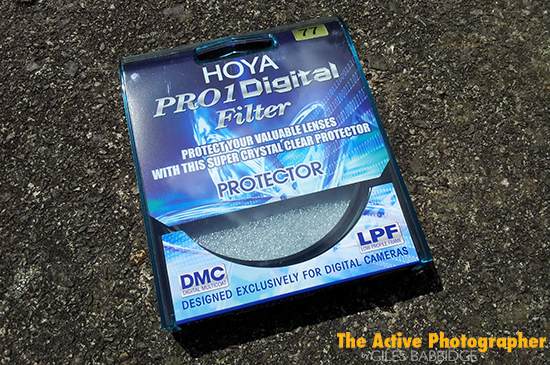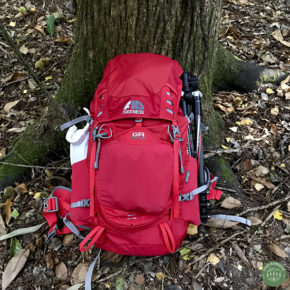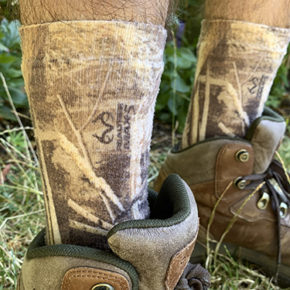Fate can be a cruel mistress at times; just when you don’t need bad luck, she has a habit of stepping up and slapping you with a set-back. Vehicle repairs, unexpected business expenses, kit failure… Take your pick.
A great many of these set-backs we can see coming. However, when it comes to accidents, they are just that – accidents. Unplanned, unfortunate and unavoidable, there’s no way we can predict them and no way we can prepare for them. Or is there?
When it comes to protecting our kit, the obvious initial precaution is to use a decent camera bag or case as storage. But it’s what happens when cameras, lenses, flash guns etc are taken out for use that we are at our most vulnerable.
Here’s a debate which continues to rage amongst us photographers, relating specifically to lenses…
My personal stance on lens protection – or, specifically, front-of-lens protection – is that a clear (i.e. neutral) filter is a must. Whenever I purchase a new lens, I always, always, always also order some kind of protective filter to fit onto the front. Whether it be a UV, a Skylight or a Protector, to me the decision is a no-brainer.
My reasoning is that should I accidentally drop, knock or scratch the front of the lens, damage limitation is most likely going to be set at the cost of a replacement filter. No great shakes – £20-40 is nothing compared to the alternative of an insurance claim or costly repair bill.
Now, some people might say that I’m being over cautious. But believe me, these random acts of destruction do occur.
I can vividly recall one occasion in particular, many years ago: I’d cycled all the way across the Isle Of Wight (20+ miles) with my camera wrapped up in a fleece to save weight (first mistake). This was stored in a rucksack strapped to a rear pannier rack and actually stayed firmly in place until I reached my destination.
It wasn’t until I was unpacking my bag, however, that I discovered the error of my ways. The fleece, to give it its due, had done a grand job at containing all the many fragments of shattered glass which had, at one time (some hours previous), resembled a filter on the front of my 24-85mm lens.
On that occasion, all I could do was give myself a slap on the wrist and pick out the remaining shards from the filter ring before throwing the debris in the nearest bin. The lens itself remained perfectly intact.
The counter argument goes something like this.
Modern lenses are highly-crafted, precision instruments; the glass used in their construction is of the highest quality and resolution. Therefore, to attach a piece of (inferior) glass to the front is like putting budget tyres on a Ferrari – you’re not going to get the best performance out of it. Why would you spend all that money on a premium product, only to not make the most of its capabilities?
I can quite see the argument, but here’s the thing.
None of my clients have ever turned around and said “Hang on a minute! Did you put a [insert type of…] filter on the lens before you took this shot?! Hmm…” Rather, they’ve always been delighted with the results, as have I – and that’s surely all that matters at the end of the day. Besides, in layman’s terms, you’re not going to see a marked difference in quality; only when looking in super-analytical detail on the computer screen would the average viewer see a discrepancy.
No, it really is horses for courses as to where you stand on this debate. Ultimately, the decision falls to the individual to make: protect your lens for piece of mind or take a calculated risk and drive that Ferrari like there’s no tomorrow – it’s your call.









If you accept that there isn’t much impact on image quality when using a filter, is there a marked difference between cheap UV filters and expensive ones?
Hi Kevin,
In my experience of trying out both cheap and expensive UV filters over the years, the answer would have to be ‘no’.
That said, I’ve never been one to blow up pictures to a ridiculous scale on a screen for the sake of trying to prove/disprove such theories – so the verdict would have to be that, to the average eye, it really is a very nominal difference, if anything at all.
I have been known to shoot very high-level imagery for some very large clients, with what we would call a ‘cheap’ filter on the front of my lens. On those occasions, details such as individual hairs on faces can clearly be seen – how’s that for clarity?!
Given that my results have never been called into question by clients, as described above, I’d have to conclude that my time is far better spent actually taking pictures than over-worrying the matter of which brand name adorns my filters.
That’s good to know as I’ve plenty of random filters lying around after buying and selling old lenses. I’ll make sure I keep the better ones anyway to put on the lenses I finally settle on keeping. Sometimes the cost difference is massive, currently looking at a 95mmm filter and a cheap one is £15-20, a decent one £90 plus…
Quite agree.
I’ve also never been able to spot the colour cast that some purist claim that skylight filters give to images.
The only downside I’ve come across is an increase in lens flare, but that’s probably more due to me putting dirt on the filter!
Glyn – I agree with both of your points there…
No doubt those ‘purist’ types will have some comeback over the colour fidelity issue, but I would always remind them that I work in ‘real world’ terms, not ‘laboratory conditions’, as it were.
As for lens flare – Well, that’s something that affects all lenses, regardless of whether a filter is attached or not. And in my experience, dirt has a sneaky habit of getting on a lens’ front element just as much as it does a protective filter!